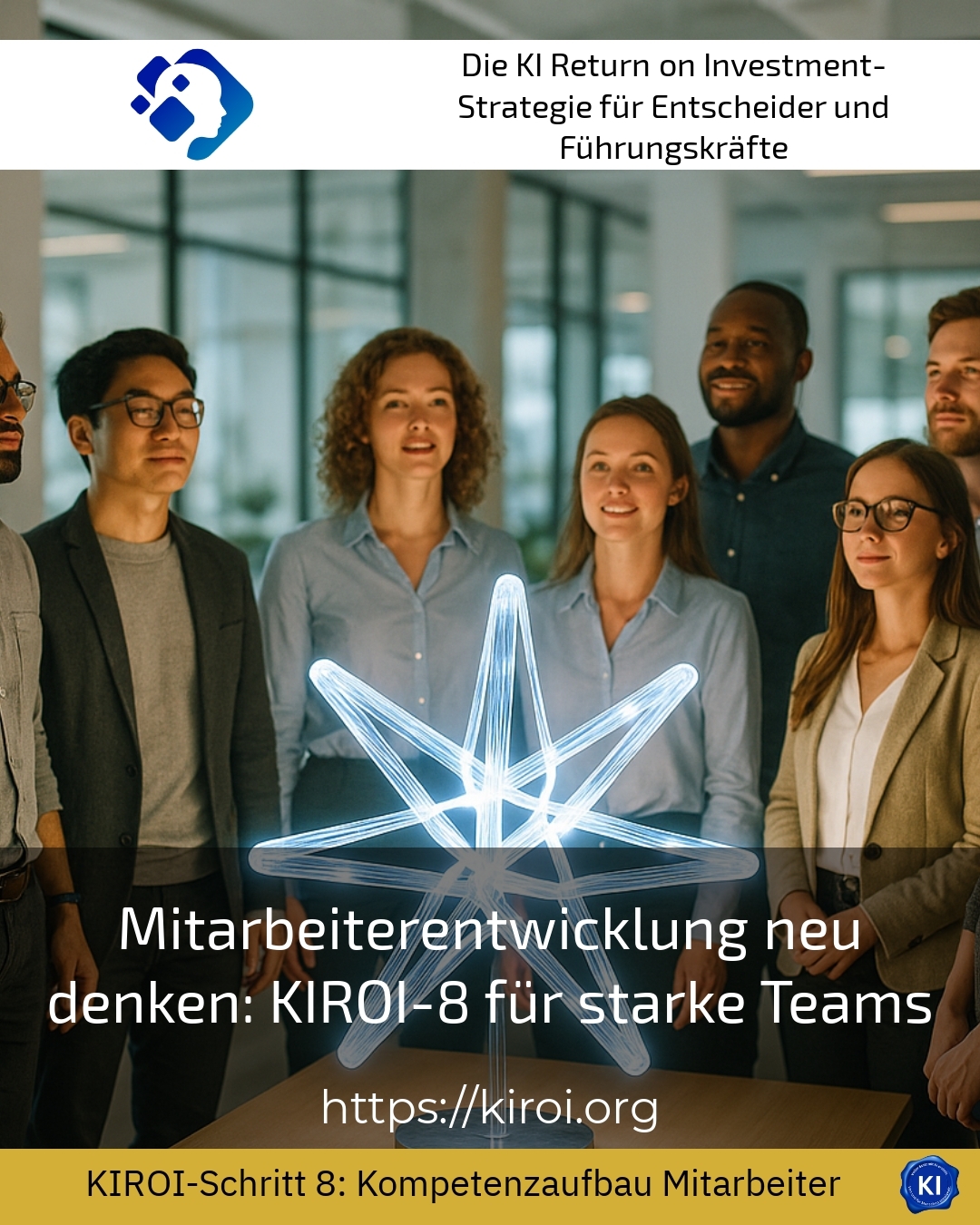Now more than ever, employee development is a key success factor for companies. Many managers and teams come to us because they are looking for sustainable ways to strengthen competences and actively shape change. Traditional approaches are often no longer sufficient. Instead, innovative concepts are needed that promote individual potential and at the same time improve teamwork. This is precisely where the KIROI model comes in, especially step 8, which specifically targets employee development.
Employee development as the key to strong teams
Employee development means systematically promoting the skills and competences of employees. This is achieved not only through traditional training courses, but also through a combination of practical experience, individual support and targeted learning formats. Many companies report that this approach enables them to respond more quickly to new challenges.
An example from the IT sector: a team of developers is working on a complex project. Through regular workshops and coaching sessions, the employees expand their technical expertise. At the same time, they improve their communication and collaboration. The result is a motivated team that solves complex tasks independently.
Another example from the manufacturing industry: here, employee development is promoted through on-the-job training and job rotation. Employees familiarise themselves with new processes and can therefore react more flexibly to changes. Companies in the financial sector also rely on individual learning paths to retain their employees in the long term.
Employee development through structured support
Use practical learning formats
An important aspect of employee development is the selection of suitable learning formats. Training on the job, i.e. learning directly on the job, is particularly effective. Employees learn from experienced colleagues or through project work. Training near the job, i.e. in-house seminars, ensures practical relevance. And off-the-job training, such as external seminars or online courses, broadens professional and methodological horizons.
An example from the healthcare sector: A manager develops individual learning plans for her team. She strengthens trust in the team through targeted workshops and personal support. The employees report that they feel more confident and are better able to deal with resistance.
Another example from consulting: here, a mentoring programme is combined with on-the-job training. The employees report back that this practical support has noticeably increased their methodological expertise. They can now solve complex tasks more independently.
Coaching and mentoring as a source of inspiration
Coaching and mentoring play an important role in employee development. Individual coaching sessions help to recognise personal strengths and unleash development potential. Mentoring offers the opportunity to learn from experienced colleagues and provide mutual support.
An example from the IT sector: A company introduces a mentoring programme. Young employees are supported by experienced colleagues. The result is faster familiarisation and stronger loyalty to the company.
Another example from the manufacturing industry: coaching is used here to support employees in the areas of occupational safety and process optimisation. Employees report that they feel safer and are better able to deal with challenges.
A third example from the financial sector: a company uses coaching to address the emotional side of employee development. Appreciative behaviour and recognition of achievements motivate the team more strongly.
Employee development in a team context
Team building and joint development
Employee development not only takes place individually, but also in a team context. Methods such as the GRPI model help to optimise teamwork. Team members learn to define goals together, clarify roles and improve communication processes.
An example from consulting: A team works with the GRPI model to improve collaboration. The team members define goals together and clarify roles. The result is more efficient collaboration and stronger team dynamics.
Another example from the IT sector: the FSNP model is used here to support the team development phases. The team members are supported in the orientation phase with clear objectives and structures. In the storming phase, conflicts are resolved constructively and initial successes are celebrated together.
A third example from the manufacturing industry: a team works with the GRPI model to optimise collaboration. The team members jointly define goals and clarify roles. The result is more efficient collaboration and stronger team dynamics.
My analysis
Employee development is not a self-runner, but an accompanied process. Managers repeatedly report that the impetus they receive from external support helps them to fulfil their management tasks more purposefully and consciously. The combination of individual support, practical learning formats and selected methods proves to be promising. KIROI coaching acts as a helpful platform on which managers can reflect on and expand their own competences without making promises of effectiveness, but with the aim of promoting development and successfully supporting projects.
Further links from the text above:
Employee skills development: KIROI step 8 for decision-makers
Team building: team development methods for practical use
Employee competence development: KIROI step 8 for AI coaching
Team effectiveness: 7 methods that promote your team development
Strengthen competences for the future with KIROI 8
KIROI Step 8: Employee skills development for managers
11 Employee development methods & benefits
KIROI Step 8: Employee skills development Tips & methods
Employee competence development: KIROI step 8 for strategies & methods
Employee skills development: KIROI Step 8 for managers
Rethinking employee development: KIROI 8
Employee skills development: KIROI step 8 for structured support
For more information and if you have any questions, please contact Contact us or read more blog posts on the topic Artificial intelligence here.















